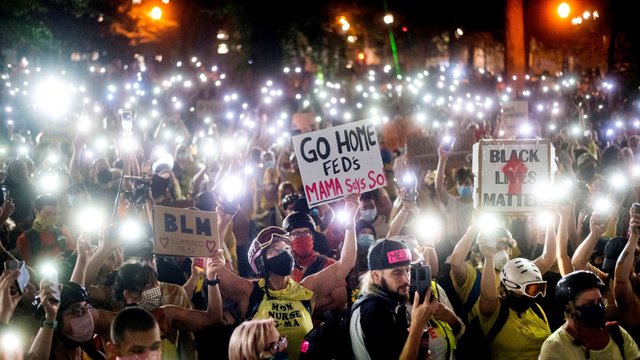South Korea offers exercises for U.S. social developments
Constraint in South Korea helped shape favorable to majority rules system fights.
Chang has composed a book, "Dissent Logic: State Restraint and South Korea's Vote based system Development, 1970-1979," that looks at the underlying foundations of the 1980s majority rule government development in the Asian country and the arrangement of common society today. The book centers around the connection between South Korean nonconformists and the system of tyrant Park Chung-hee.
Park controlled with an iron clench hand somewhere in the range of 1961 and 1979 while regulating financial strategies that brought quick monetary development and industrialization and which got known as "the Marvel on the Han Waterway." therefore, South Korea got one of the quickest developing countries during the 1960s and 1970s.
A military general prior to turning out to be president, Park banned analysis of his system and sentenced a few nonconformists to death. During his 18-year system, Park was ceaselessly faced by contradiction and social tumult until his death in 1979.
Chang and Gi-Wook Shin, overseer of Stanford's Shorenstein Asia-Pacific Exploration Place, together have considered the counter Park development, analyzing almost 5,000 demonstrations of dissent and restraint, and following development variety, fight strategies and intergroup fortitude.
Fights including in any event two gatherings of people — workers, understudies, columnists, Christian activists and government officials — rose from around 3% of all shows in 1970 to almost 20% in 1977, regardless of an inexorably viable police crackdown, as per the two teachers.
In 1974, half of all dissent occasions gave some sort of intergroup fortitude articulation — a demonstration of help for other protester networks.
"Today, we may consider explicit contemporary developments to perceive how they are being molded by restraint and how they are additionally forming the abusive specialists acting against them," Chang said in an email, remarking on current social developments in the US.
The People of color Matter development in U.S. has developed — and started a backfire.
Similarly as dissent developments in South Korea adjusted, widened and set off kickback, the People of color Matter (BLM) development has advanced, expanding its points while inspiring rivals, Chang noted.
"The extension of BLM objectives and casings spurred diverse moderate components in American culture — lawmakers, civilian army gatherings, general traditionalist public, and so forth — to return together to push on what is presently the police change development," Chang said.
"As police powers at that point proceeded to curb BLM fights, the development started calling for crucial changes of the police business overall. Consequently, police restraint of fights — and not simply the police severity against dark people — set off the improvement of the development's objectives and casings."
Presently, as at that point, expanded constraint has initiated dissenters to widen their objectives. In South Korea, understudy dissidents at first went against Park's standardization deal with Japan in 1965. Yet, following quite a while of restraint, the dissent development trained in on Park's rule.
"Unmistakable from the dissent cycles during the 1960s … the vote based system development that arose during the 1970s focused on the dictator design of Park's administration," Chang writes in his book.
Social developments can advance and adjust.
Chang and Shin finished up their venture by taking note of that the achievement of a development can be estimated in quantities of individuals as well as in intergroup fortitude and strategic transformation. "There are different approaches to gauge 'force,' and the quantity of members and kinds of strategies utilized are only two of the ways," they composed.

What might be said about the insurrectionists who raged the U.S. Legislative center on January 6, expecting to topple the appointment of Joe Biden to the administration?
A crackdown by online stages since the uprising has prodded some state army gatherings to discover new web-based media source for getting sorted out. In South Korea, understudies put out secretive distributions as their development moved underground. South Korean Christians and laborers utilized underground organizations to scatter against government writing.
The examples of dissent in the Recreation center Chung-hee period offer an expression of alert for those endeavoring to stifle extreme right fanaticism, yet additionally some expect activists: Social developments don't really bite the dust, however can advance and adjust.